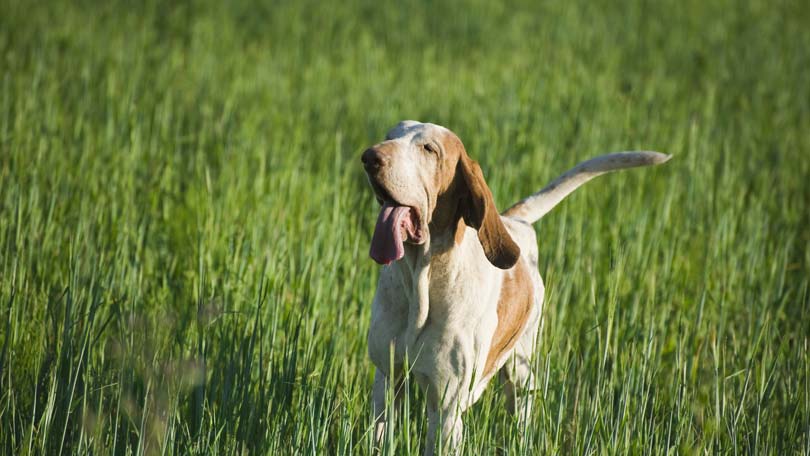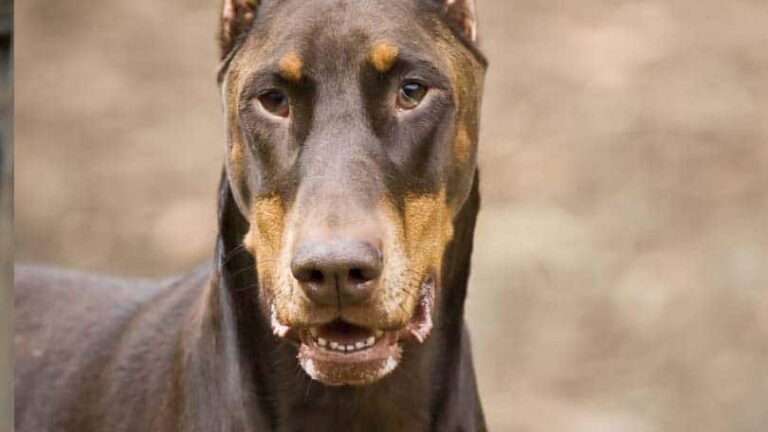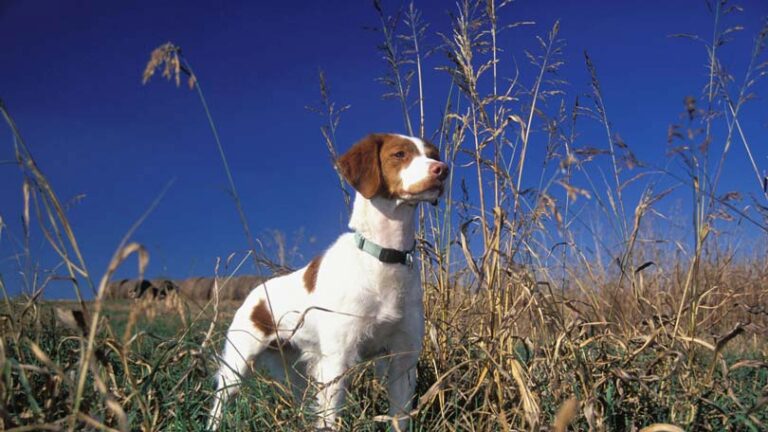Bloat in Dogs – Gastric Dilatation and Volvulus (GDV)
The term “bloat” refers to an over-distension of a dog’s stomach with food, air, or any other substance. In some cases, a dog that appears bloated may have simply overeaten or swallowed a large amount of air. Mild cases of this type of bloat can resolve on their own if a dog vomits, burps, or if the digestive process runs its course. However, when a dog’s stomach is distended it can more easily rotate and flip over on itself. This condition is called gastric dilatation and volvulus (GDV) and is one of the biggest emergencies that a dog owner can face. The condition is excruciatingly painful and without rapid and aggressive treatment, likely to be fatal. To complicate matters, many dogs that have undergone a “simple” bloat go on to develop GDV, and it is almost impossible for a dog owner to determine the severity of their pet’s condition before serious complications can arise. For these reasons, a dog that appears bloated should be taken to veterinarian immediately!
GDV most commonly affects large, deep-chested breeds of dogs. The Great Dane is the poster child for GDV; some studies have shown that if a Dane lives to be 10 years of age, it runs a 50% risk of developing the disease. Other susceptible dogs include the Saint Bernard, weimaraner, akita, standard poodle, Irish setter, boxer, Irish wolfhound, doberman pinscher, Old English sheepdog, and the basset hound. Risks are higher for males than for females and also increase as a dog ages. Thin, nervous, and aggressive dogs also are in greater jeopardy than are more laid back individuals, but it must be remembered that any type of dog can suffer from GDV.
The reasons behind the increased frequency of GDV in deep-chested dogs are not completely understood, but it is thought that the ligaments supporting the stomach in these animals are more likely to stretch and loosen, which then allows the stomach to rotate when conditions are right. Whatever the cause, once the stomach has flipped over, food and gas can longer escape through the esophagus or small intestine. As the stomach expands and the pressure builds, blood flow is restricted throughout the stomach and the rest of the abdomen. Because the spleen is attached to the stomach, this organ will sometimes also be twisted into an abnormal position. Without rapid treatment, low blood pressure, shock, and abnormalities in blood clotting can cause death within hours.
The following symptoms are frequently observed in dogs suffering from GDV:
- nausea and retching without much material being expelled from the stomach
- an enlarged abdomen
- pain and restlessness
- excessive drooling
As the disease progresses, dogs may collapse and become unresponsive.
Diagnosis
Many veterinarians will make a tentative diagnosis of GDV based on a dog’s breed, clinical signs, and a physical exam. Often, stabilizing the patient’s condition must take priority over reaching a definitive diagnosis. Initial treatment frequently consists of fluid therapy to maintain blood pressure and relieving abdominal pressure. If a tube can be passed through a dog’s mouth and into its stomach, gas can escape and food can be flushed out. If the dog’s “twist” is too tight, the veterinarian may have to pass a needle through the pet’s abdominal wall to reduce pressure and allow passage of a stomach tube. Once it is safe to do so, the veterinarian will take x-rays with the dog lying on its right side. In cases of GDV, the x-ray frequently shows a characteristic tissue fold that appears to divide the gas-filled stomach in half. Blood work and an electrocardiogram (ECG) are also necessary to evaluate a dog’s overall condition in preparation for anesthesia, surgery and to plan appropriate supportive care.
Treatment and Prevention of Bloat
A dog that has been diagnosed with GDV needs surgery as soon as its condition is somewhat stable. While in surgery, the veterinarian will rotate the stomach and the spleen, if necessary, back into their normal positions. The condition of the dog’s abdominal organs will be carefully assessed. If irreversible tissue damage has occurred, portions of the stomach may need to be removed. If the stomach has ruptured, the stomach wall will need to be repaired and the dog’s abdomen thoroughly flushed to remove foreign material. The doctor may also have remove part or all of the dog’s spleen. Finally, the veterinarian will surgically attach the outside of the stomach to the body wall to prevent GDV from reoccurring. This last step, called a gastropexy, is absolutely essential because without it approximately 75% of dogs that have bloated will go on to have another episode. Several different methods of performing a gastropexy are in common use, and all can be very successful in the hands of an experienced surgeon.
Unfortunately, surgery isn’t the last hurdle that a dog with GDV has to overcome. Postoperative complications are very common. Abnormal heart rhythms, low blood pressure, vomiting, pneumonia, rupture of the stomach, and other complications can all occur, but many can be successfully treated as long as the dog remains hospitalized and is very closely monitored.
Dog owners do have some tools available to reduce their pet’s chances of developing GDV, including the following:
- feed small portions of food several times throughout the day rather than one large meal
- do not add water to dry dog foods, adding some canned food is okay
- limit a dog’s activity for several hours after eating
- discourage dogs from drinking large amounts of water at one time
- slow rapid eaters by adding rocks or other large, inedible obstacles to the food bowl
- do not use elevated food bowls
- do not feed foods that have an oil or fat listed as one of the first four ingredients
- reduce a dog’s exposure to stressful situations
Owners of dogs that are at extremely high risk of developing GDV may want to consider having surgery performed that will attach their pet’s stomach to its body wall before an emergency develops. This procedure is called a prophylactic gastropexy and is often done at the time of spay or neuter.
Prognosis
With timely, appropriate, and aggressive treatment, studies have shown that 70 to 80% of dogs can survive an incidence of GDV. Only approximately 6% of dogs that have undergone a gastropexy experience a future episode of this terrifying disease, You can visit Vet-Medic for you all pet medication needs.
Article By:
Jennifer Coates, DVM graduated with honors from the Virginia-Maryland Regional College of Veterinary Medicine in 1999. In the years since, she has practiced veterinary medicine in Virginia, Wyoming, and Colorado and is the author of several short stories and books, including the Dictionary of Veterinary Terms, Vet-Speak Deciphered for the Non-Veterinarian. Dr. Coates lives in Fort Collins, Colorado with her husband, daughter, and a menagerie of pets.

Having discovered a fondness for insects while pursuing her degree in Biology, Randi Jones was quite bugged to know that people usually dismissed these little creatures as “creepy-crawlies”.







